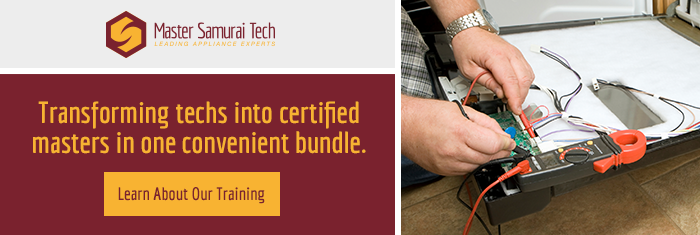|
A long, long time ago, people did things like read books instead of surfing the Internet or had thoughtful discussions about complicated topics instead of yelling political slogans and sound bites at each other. Most folks also had at least a conceptual understanding of the process of troubleshooting: the logical, step-by-step progression of tracking down the cause of a problem.
To troubleshoot an appliance, you first need to have a basic understanding of how that appliance is supposed to work both from the operator’s standpoint and how the components inside are supposed to work together. In other words, to figure out what’s wrong, you first have to know what “right” is. Then begin troubleshooting right at the problem and step through, checking inputs and outputs, whether mechanical or electrical.
For example, an oven electric bake element isn’t getting hot and is not visibly damaged. The element needs 240 VAC to get hot, 120 VAC at each of its terminals. The voltage at the terminals is controlled and delivered by different circuits or components inside the oven. Many people would just immediately replace the element, not even considering how the element works or checking to see if it’s getting the voltage it needs to operate. Maybe they get lucky and fix the problem, but that’s not troubleshooting. That’s changing parts like a monkey.
Appliance repair servicers who practice their trade like that are not technicians or Professional Appliantologists; they are called “parts changing monkeys.”
Parts changing monkeys can cost you a lot of time, frustration, and money.
|

